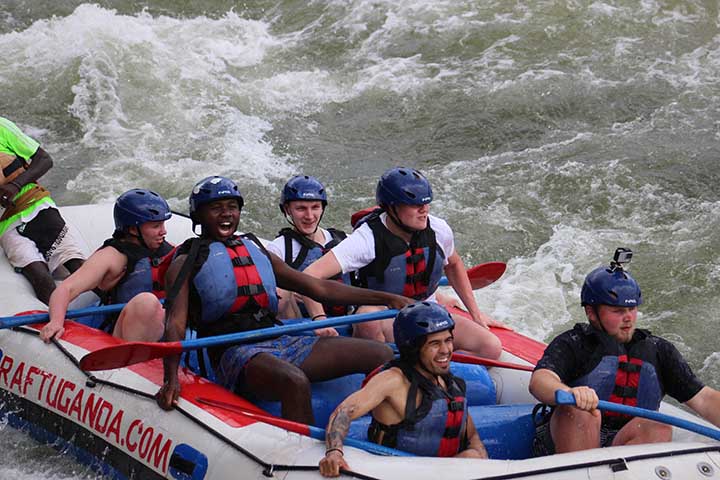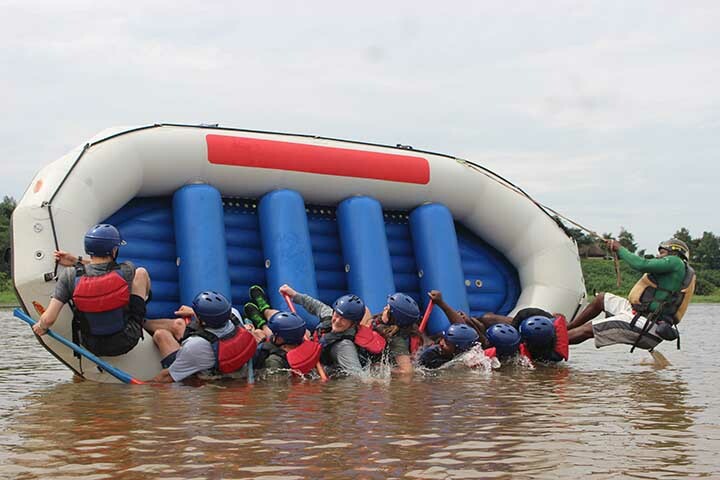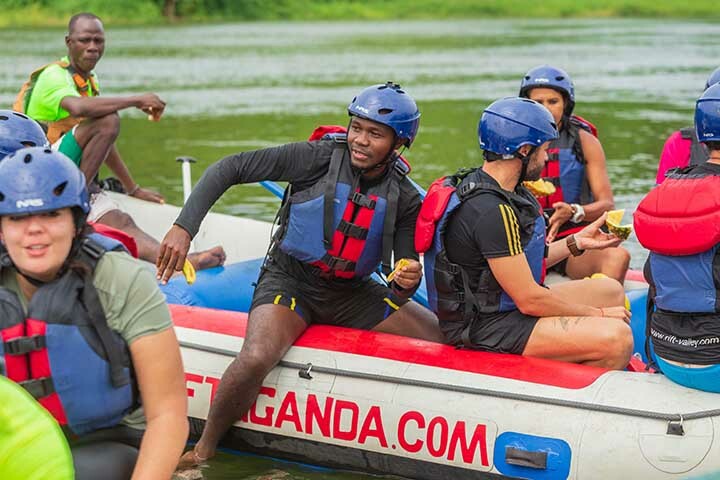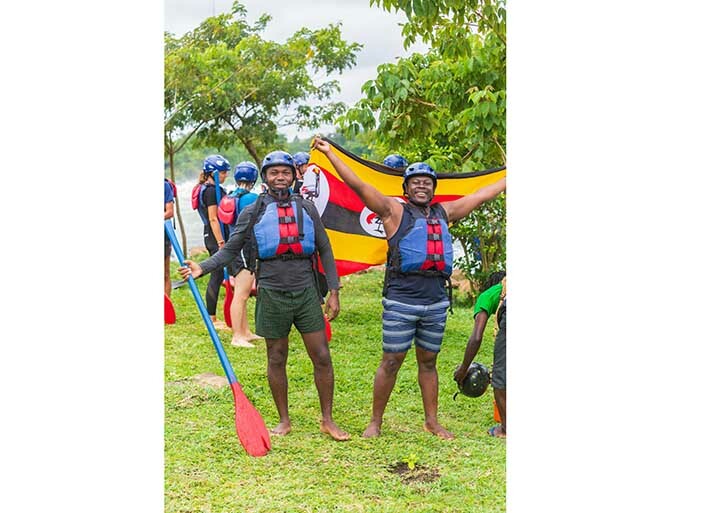Rafting: Daring the rapids of river Nile
Nov 17, 2020
According to Lilly Ajarova the UTB Chief Executive Officer (CEO), the Covid-19 pandemic has created an opportunity for Ugandans to travel within their own country.

"Adelante. Hacia atras," were the two Spanish words frequently used by one Juma Tili to mean a Paddle forward, and backwards respectively during the rafting excursion on river Nile. "Harder, stop, get down!"
Such were the commands from Juma Tili who preferred to be called Big J.
Down the longest river, the inflated boat sailed before it flipped over, throwing all us on board, into the river.
Just like Paulo Coelho, a Brazilian lyricist and novelist put it; "You drown not by falling into a river, but by staying submerged in it." All the time, the boat flipped and we ended up in the river, with support of the strong-bodied life-jackets, we could flap our way back to the water surface.
As Uganda is slowly opening up for international tourists, the Uganda Tourism Board (UTB) found it prudent to have a media team follow a group of Spanish veteran athletes who had come to visit the athletic champions Joshua Cheptegei and Jacob Kiplimo at their country homes in Kapchorwa district.
In its quest to promote tourism through sports, UTB officially welcomed the Spanish athletes who had also planned to visit other parts of the country. After their visit to Mt. Elgon national park and Sipi falls, the Spaniards went for a rafting excursion on river Nile in Jinja district.

Prior
Having grabbed a gig from UTB, six other media enthusiasts and I headed for Jinja where we joined the group of sixteen Spanish athletes and physiotherapists who were heading for the same spree.
There lies a small distance from Jinja town to Njeru municipality where Tulina riverside camp is located, from where we were to set off. After we were each served with Rolex, we fastened our life-jackets, helmets among other costumes. In three groups we boarded three inflatable boats with inscriptions, "Raft Uganda.com."
"You need to listen to my instructions lest we shall all die," retorted Big J. "When i say 'stop,' you immediately have to abide, and likewise when I say 'get down," roared the instructor. Indeed; "paddle harder, stop, get down," were the instructions that punctuated our entire four-hour trip.
Drills
Jumping from the boats into the water and flipping the boat to immerse all occupants into the river, were part of the drills. Yes, it was scary! That point when I could see the fast-moving water plunging on rocks, splashing high in the skies, creating foam, and mist and causing a big roar in the form of a waterfall, was really spine-chilling.
Although I was rafting for the third time, it was at this point that I realised, I had mistaken recklessness for bravery. Seated on the inflatable boat before attempting the first rapid, I was petrified, alarmed, horrified and appalled. Freaky and nerve-racking as it looked to be, the drills and all rafting spree was a big deal.

Rising water levels heightening rapids
As we were going down the stream, we couldn't attempt the first rapid which is known as overtime. It was previously a level five rapid which has now increased to the sixth level due to the increase in water volume. We had to move out of the rafts and manoeuvre around this waterfall.
Each rapid acquired a name depending on an area where it's found or a particular circumstance that could have happened around such a waterfall.
Big J and other guides described the fun that used to come with high velocity and altitude of each rapid before construction of the power dams on river Nile.
As we went about 'conquering' other rapids, we could see brown sections of the river, evidently portraying the dump, erosion and silting, while other sections were characterised with water hyacinth. Eroded banks of the river clearly explained the silting as well as the adverse effects of environmental degradation.
"Over the twenty years I've been rafting, I can confirm the river was adversely affected by the construction of electricity dams," confided Big J, adding that, in the past, rafters used to 'do' twelve rapids for two days, before the excursion was reduced to only five rapids. "We used to camp at a certain island known as Kadogo where tourists would sleep and continue with the excursion the following day. It was really epic and exciting," Big J recollected.

Conquering rest of the rapids
Nevertheless, watching birds perching from one tree, across the river to another tree, was breath-taking. Other creatures of the air could briefly duck into the waters before flapping wings back to the sky. A couple of times, the boat would flip but having gotten used to it, turned out more pleasurable.
Along the 10km voyage, we also came along locals diving with basins to get sand beneath the river, as they poured into their wooden canoe boats. It was mind-boggling. On the banks, were women and children washing clothes while others were swimming in the silent waters of the Nile.
At such points where the water currents were slow, we could jump out of respective boats, for a warm swim.
It was the same time we were served with bananas, pineapples among other fruits from the safety boat. Engaging in topical discussions while sailing was another good experience of rafting. Whenever the sun was overhead and its rays too sharp for our skins, we could swim from one boat to another, enjoying the silent part of the river Nile.
From Njeru to Kayunga
The journey that we started in Njeru municipality, came to an end at River Front beach in Kayunga district, from where we served lunch. We later embarked on our journey back to Kampala, as we reminisced about our freaky but enjoyable experience. Yes- we had conquered the longest river in the world.

UTB committed to promoting tourism post Covid-19
Hon. Daudi Migereko the board chairperson for UTB, noted that Uganda has a record of peace and stability which is more likely to have international tourists flock the country as Covid-19 cases reduce.
"All international tourists who had earlier booked for their tourism gigs, should not cancel because Uganda is an island of peace and stability in the region," remarked Migereko adding that UTB is in talks with the ministry of works and transport, to have most of the roads leading to tourism sites, serviced and maintained.
According to Lilly Ajarova the UTB Chief Executive Officer (CEO), the Covid-19 pandemic has created an opportunity for Ugandans to travel within their own country.
'The pandemic has created an opportunity for us to look inwards and travel our country. It is delightful to launch a domestic tourism campaign as part of the efforts by the board to not only to encourage domestic travel but also close the seasonality gap that has been created," Ajarova noted earlier.
